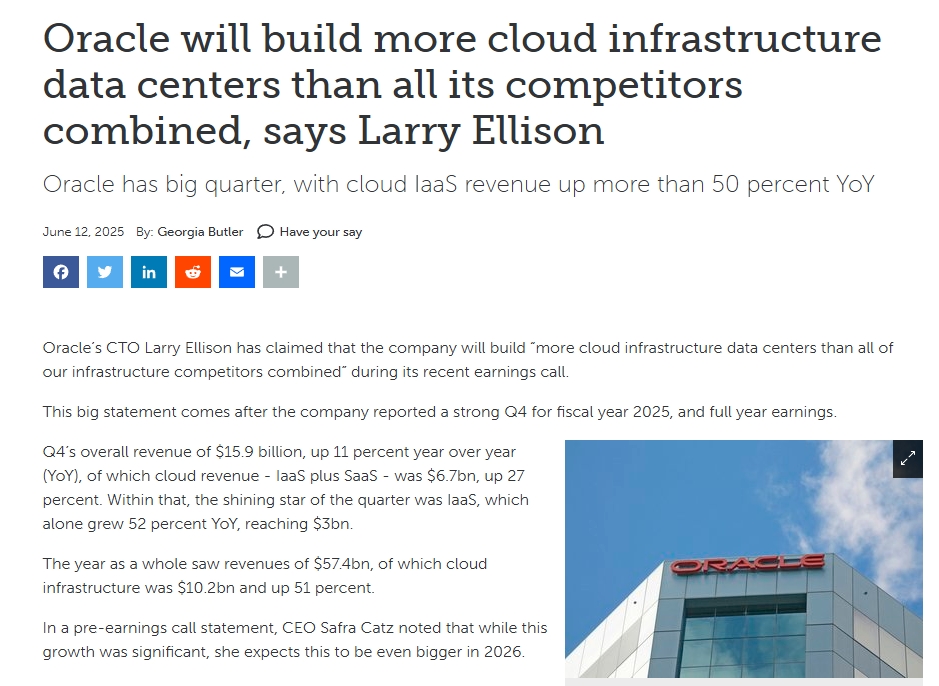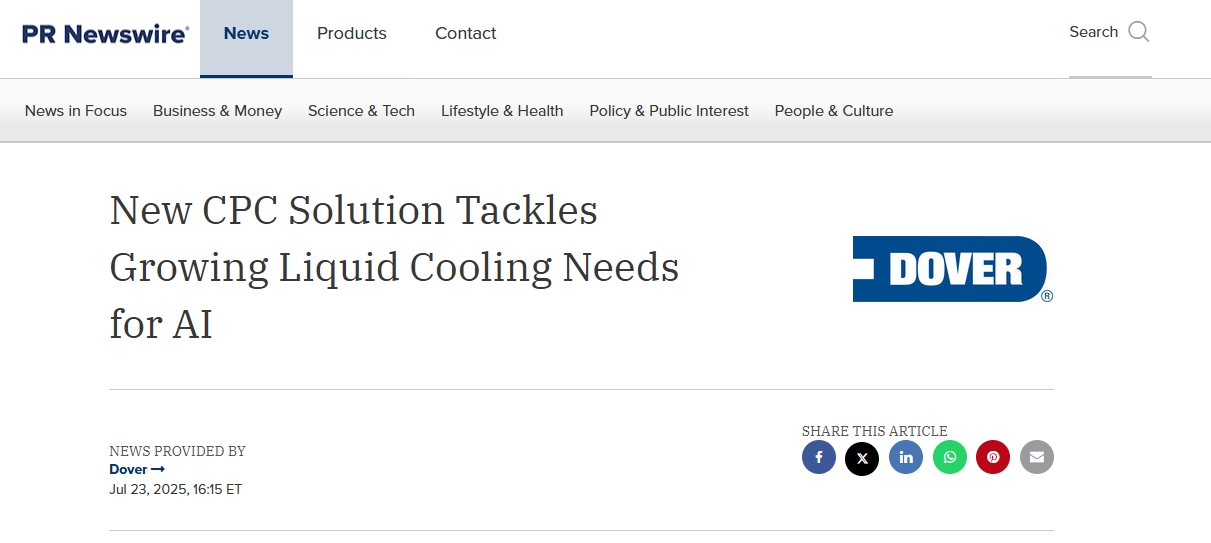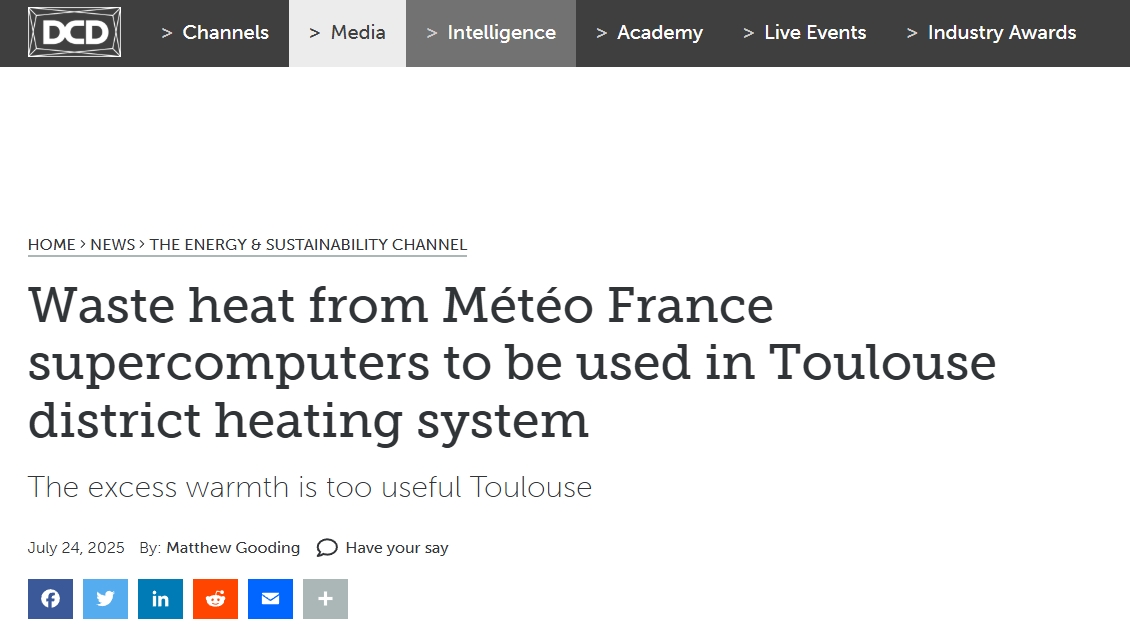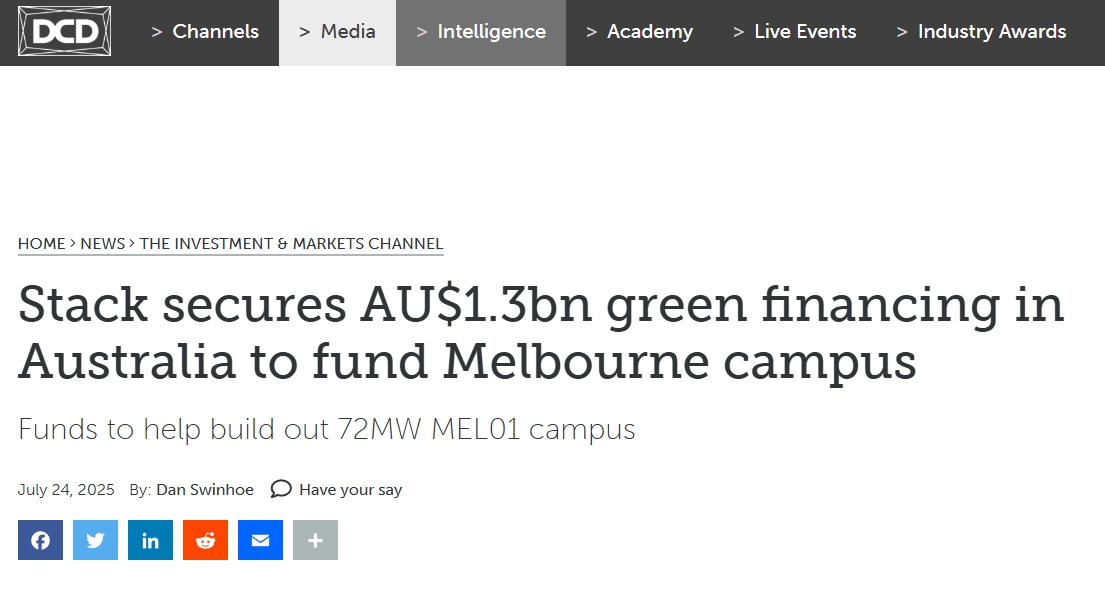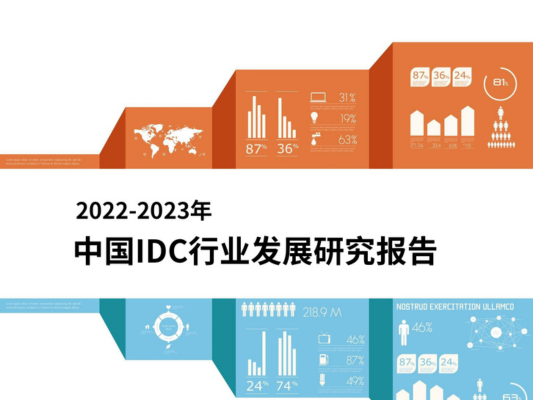Oracle has big quarter, with cloud IaaS revenue up more than 50 percent YoY
Oracle’s CTO Larry Ellison has claimed that the company will build “more cloud infrastructure data centers than all of our infrastructure competitors combined” during its recent earnings call.
This big statement comes after the company reported a strong Q4 for fiscal year 2025, and full year earnings.
Q4’s overall revenue of $15.9 billion, up 11 percent year over year (YoY), of which cloud revenue - IaaS plus SaaS - was $6.7bn, up 27 percent. Within that, the shining star of the quarter was IaaS, which alone grew 52 percent YoY, reaching $3bn.
The year as a whole saw revenues of $57.4bn, of which cloud infrastructure was $10.2bn and up 51 percent.
In a pre-earnings call statement, CEO Safra Catz noted that while this growth was significant, she expects this to be even bigger in 2026.
"FY25 was a very good year—but we believe FY26 will be even better as our revenue growth rates will be dramatically higher," said Oracle CEO, Safra Catz. "We expect our total cloud growth rate—applications plus infrastructure—will increase from 24 percent in FY25 to over 40 percent in FY26. Cloud Infrastructure growth rate is expected to increase from 50 percent in FY25 to over 70 percent in FY26. And RPO is likely to grow more than 100 percent in FY26.”
Speaking on that further, Catz said that this number was not dependent on Stargate which is “still in formation.”
“There are a lot of partnerships we are in the middle of right now that are all part of this enormous growth rate. We are the destination for everyone who wants AI workloads who want database workloads and want applications. All of that together comes in our RPO. We have so much in pipeline right now that -- and of course, we have so much in RPO, meaning those are noncancelable contracts, and we are still in a position where our supply is not meeting our demand.”
Catz added: “As Stargate forms, that will contribute into all of this,” later noting that some of Oracle’s business with OpenAI is not related to Stargate.
Earlier this week, reports emerged that Oracle was looking for up to 5GW of data center capacity to support OpenAI’s workloads which seemed to be separate from the Stargate project. Stargate has been in the works since January of this year, though even in the most recent Oracle earnings call the company was yet to officially sign a contract for the deal.
It is unclear if, from Catz’ comments that the project is still “in formation” whether this means the deal is still not yet finalized. DCD has reached out for comment.
Among those recent partnerships, CTO Ellison revealed that Oracle had scored a contract with Chinese e-commerce company Temu.
“We got a gigantic contract from Temu that would have been unprecedented, except for all the other gigantic contracts we've also been getting. But Temu is a very large company that's growing extremely rapidly, and they are basically moving their infrastructure to the Oracle Cloud. That was a very big contract,” Ellison told investors.
The company was also keen to note the success of its Oracle Database@ business. Ellison said in the pre-call statement: “MultiCloud database revenue from Amazon, Google, and Azure grew 115 percent from Q3 to Q4.
"We currently have 23 MultiCloud data centers live with 47 more being built over the next 12 months. We expect triple-digit MultiCloud revenue growth to continue in FY26. Revenue from Oracle Cloud@Customer data centers grew 104 percent year-over-year. We have 29 Oracle Cloud@Customer dedicated data centers live with another 30 being built in FY26."
On the capex side, Oracle had a full-year spend of $21.2 billion, of which $9.1 billion was from the latest quarter.
This increased quarterly capex was said by Catz as related to hardware costs.
“We have building partners who charge us rent once they finished constructing things. And when we all of a sudden have higher capex, it means we are filling out data centers, and we are buying components to build our computers, which are different than other people's, and we are putting them on the floor. We had an opportunity to buy up and for deployment, and so we did. We are putting out as much capacity as we possibly can as quickly as we can,” she explained.
The company is expecting capex of $25bn next financial year, though Catz noted that this may turn out to be “understated.”
For comparison, Microsoft has pledged $80 billion in spending for this year, Amazon $100bn (including warehouses), Google $75bn, and Meta expects between $60 and 65bn. China's Alibaba expects to spend $52.7bn, though all these capex numbers likely include construction costs.
While the building of data centers may not be part of Oracle’s Capex, Ellison was keen to reiterate the company’s dedication to constructing new facilities, telling investors: “Oracle will build more cloud infrastructure data centers than all of our infrastructure competitors combined. All of our OCI data centers from the smallest low-cost data center to the largest gigawatt AI training data center include all Oracle OCI capabilities.”
Ellison has been known to make large commitments of this ilk. In 2023, Ellison said that Oracle would build 100 data centers that year. DCD has asked Oracle how realistic this latest goal is.
Outside of revenue and Capex, operating cash flow was $20.8 billion during fiscal year 2025, up 12 percent. GAAP operating income was $17.7 billion, and non-GAAP operating income was $25bn.
Oracle's shares are up more than 24 percent today.

